I'm looking for the official T-SQL documentation for "ORDER BY RAND()" and "ORDER BY NEWID()". There are numerous articles describing them, so they must be documented somewhere.
I'm looking for a link to an official SQL Server documentation page like this: http://technet.microsoft.com/en-us/library/ms188385.aspx
CLARIFICATION:
What I'm looking for is the documentation for "order_by_expression" that explains the difference in behavior between a nonnegative integer constant, a function that returns a nonnegative integer, and a function that returns any other value (like RAND() or NEWID()).
ANSWER:
I appologize for the lack of clarity in my original question. As with most programming-related problems, the solution to the problem is primarily figuring out what question you're actually trying to answer.
Thank you everyone.
The answer is in this document: From: http://www.wiscorp.com/sql200n.zip
Information technology — Database languages — SQL — Part 2: Foundation (SQL/Foundation)
22.2 <direct select statement: multiple rows> includes a <cursor specification>.
At this point we have the first half of the answer:
A SELECT statment is a type of CURSOR, which means that operations can be performed iteratively on each row. Although I haven't found a statement in the docs that explicity says it, I'm content to assume that the expression in the order_by_expression will be executed for each row.
Now it makes sense what is happening when you use RAND() or NEWID() or CEILING(RAND() + .5) / 2 as opposed to a numeric constant or a column name.
The expression will never be treated like a column number. It will always be a value that is generated for each row which will be used as the basis for determining the order of the rows.
However, for thoroughness, let's continue to the full definition of what an expression can be.
14.3 <cursor specification> includes ORDER BY <sort specification list>.
10.10 <sort specification list> defines:
<sort specification> ::= <sort key> [ <ordering specification> ] [ <null ordering> ]
<sort key> ::= <value expression>
<ordering specification> ::= ASC | DESC
<null ordering> ::= NULLS FIRST | NULLS LAST
Which takes us to:
6.25 <value expression>
Where we find the second half of the answer:
<value expression> ::=
<common value expression>
| <boolean value expression>
| <row value expression>
<common value expression> ::=
<numeric value expression>
| <string value expression>
| <datetime value expression>
| <interval value expression>
| <user-defined type value expression>
| <reference value expression>
| <collection value expression>
<user-defined type value expression> ::= <value expression primary>
<reference value expression> ::= <value expression primary>
<collection value expression> ::= <array value expression> | <multiset value expression>
From here we descend into the numerous possibile types of expressions that can be used.
NEWID() returns a uniqueidentifier.
It seems reasonable to assume that uniqueidentifiers are compared numerically, so if expression is NEWID() our <common value expression> will be a <numeric value expression>.
Similarly, RAND() returns a numeric value, and it will also be evaluated as a <numeric value expression>.
So, although I wasn't able to find anything in Microsoft's offical documentation that explains what ORDER BY does when called using an order_by_expression that is an expression, it really is documented, as I knew it must be.


